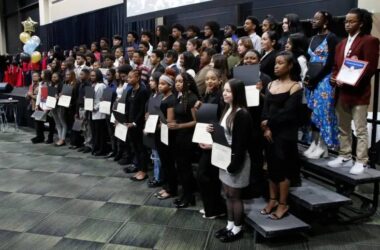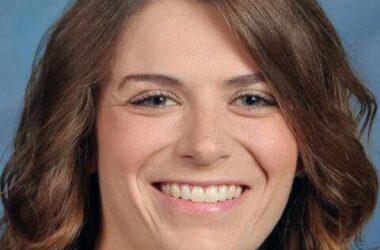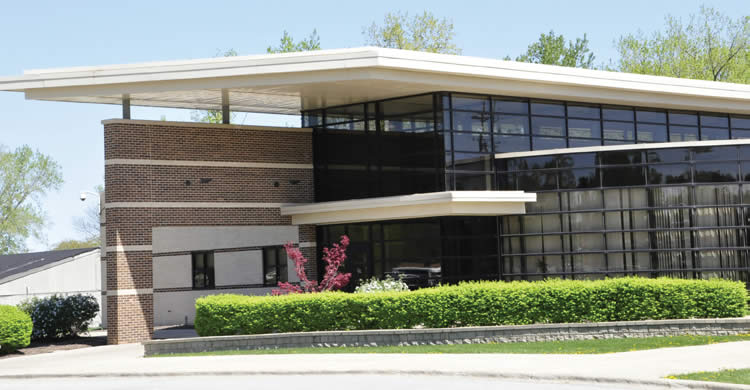
A representative from the Le Cordon Bleu College of Culinary Arts speaks with a prospective student at an education fair. SOURCE: Flickr/usag-miami
New CAP analysis finds that nearly 30 percent of students at for-profit colleges attended an institution now under additional scrutiny from the U.S. Department of Education.
Washington, D.C. —(ENEWSPF)–April 16, 2015. More than 1.5 million students are enrolled at institutions of higher education subject to stepped-up financial monitoring by the U.S. Department of Education, and students at for-profit colleges are far more likely than those at nonprofit or public colleges to be affected by the increased oversight, a new Center for American progress analysis finds. Nearly 30 percent of students enrolled at a for-profit college in the 2012-13 school year attended an institution now under additional scrutiny from the department.
“With more than 1.5 million students enrolled at institutions subject to financial scrutiny by the U.S. Department of Education, it’s vital that the department be vigilant about the stability of institutions that receive federal student aid—and communicate this type of information to students so they can make informed choices,” said Elizabeth Baylor, Associate Director of Postsecondary Education at CAP. “Given the troubling track record of some for-profit institutions, it is worrisome that a disproportionate share of students enrolled at those colleges attend a school under heightened cash monitoring.”
As of March 31, 2015, the U.S. Department of Education listed 544 institutions under heightened cash monitoring, a status that indicates that the institution is subject to additional oversight because of concerns related to its administrative management or financial position. CAP’s analysis of enrollment figures from the 2012-13 school year found that more than 1.5 million students attended a college or institution that is currently subject to the department’s additional oversight. More than 1 million of those students—64.5 percent of the total—attended for-profit colleges. Students who attended public colleges made up 26.7 percent of the total, while students who attended private, nonprofit colleges accounted for the remaining 8.7 percent.
CAP’s enrollment analysis also demonstrates that students who attend for-profit colleges are far more likely to go to a school under increased oversight than students who attend public or private, nonprofit colleges. While 5.6 percent of total students attended an institution that is currently subject to heightened cash monitoring, nearly 30 percent of students who went to for-profit colleges attended an institution subject to the department’s additional scrutiny. By comparison, 2.1 percent of students at public colleges and 2.8 percent of students at private, nonprofit colleges attended an institution that was subject to oversight.
At the time of its collapse, Corinthian Colleges Inc. was subject to heightened cash monitoring because of concerns about its practices, including making misleading claims about job prospects in its marketing materials. The negative impact its closing has on the thousands of students now left with millions in debt and unclear employment prospects serves as a cautionary tale. CAP’s new research concludes that it is critical for the U.S. Department of Education to continue to be transparent about its concerns related to institutions that participate in the federal student aid programs.
Click here to read “Transparent Oversight of Troubled Colleges Can Help Students Make Informed Choices” by Elizabeth Baylor.
Source: www.americanprogress.org








